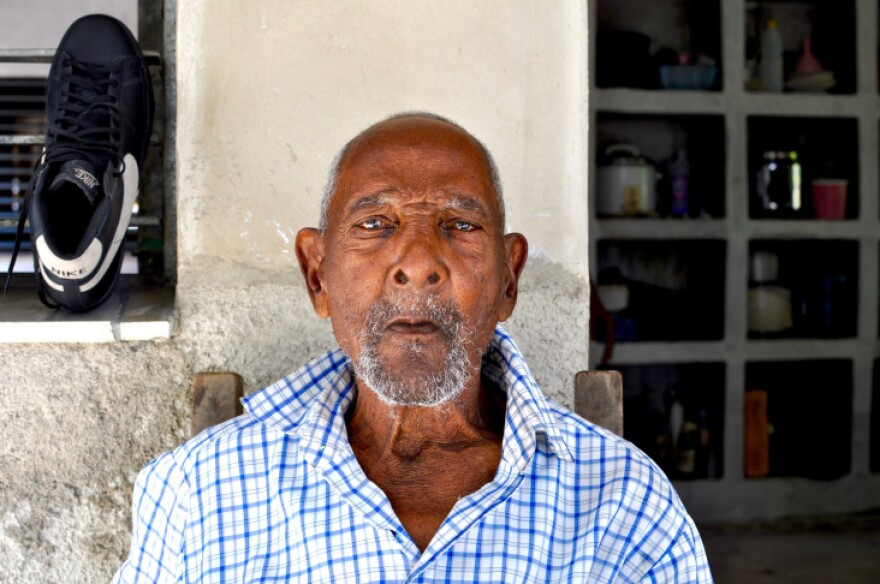Truth matters. Community matters. Your support makes both possible. LAist is one of the few places where news remains independent and free from political and corporate influence. Stand up for truth and for LAist. Make your year-end tax-deductible gift now.
'AfroLAtinidad' Explores What Being Both Latino And Black In LA Means

There's no place like home when it comes to exploring cross-cultural identity, and a new exhibition, AfroLAtinidad: mi casa, my city, has taken that idea to heart by constructing faux interiors of an "Afro-Latinx"-inspired house.
The exhibition -- which opened during Black History Month at LA Plaza de Cultura y Artes in collaboration withthe California African American Museum -- is a walkthrough exploration of "the history and contemporary experiences of Afrolatinidad in Los Angeles." The installation's recreated "home" is filled with pictures, stories, personal items, devotional objects, musical instruments, jewelry, handwritten recipes, and more -- many loaned by local families.

"We asked the community to come and show us their stuff, and bring their stories, bring their personal objects, and photographs," exhibition co-curator Mariah Berlanga-Shevchuk told LAist.
Staging the exhibition in a home setting was a choice designed to help visitors feel comfortable being all sides of their identities.
"Something we heard time and time again is that Afro-Latinx folks, when they leave the home, are often read as just African-American, or it's assumed they don't speak Spanish," Berlanga-Shevchuk said.
"People who identify as Afro-Latinx are frequently misrepresented, misidentified, and doubly oppressed," co-curator Walter Thompson-Hernández said in a press release. "Because African-American or Black and Latinx cultures are assumed to be mutually exclusive, people of both backgrounds often find themselves forced to choose a side and thus denied a voice and the opportunity to self-represent."
To evoke the feeling of "home," exhibition designer Aviva Rubin painted the walls of the exhibition in a warm, rich yellow -- the overall tint of the work, however, is political, with each room reflecting different issues.
The first room you enter is the kitchen, with text on the wall about food deserts -- areas without access to affordable, healthy food. The living room calls out mass media for a narrow representation of what Afro-Latinos contribute to popular culture.

The most political portion comes in the home's second hallway, which Berlanga-Shevchuk described as the "coalition corner." History is celebrated here, specifically the moments she described as prime for potential conflict between African-American and Latino populations, but where unity prevailed.
Also in this hallway is a quilt crafted with both cultural and political messages, created by the Social Justice Sewing Academy using recycled fabric from Cuba.

Music also plays a role throughout the exhibition, with small stereos in several rooms, including a kitchen radio and a karaoke machine in "the backyard" room. That room also looks at the community's connection to dance, and features a collection of instruments like bongos, a cajón, and a chekere.

The bedroom is designed to be a look into private spaces, where you can examine the dresser drawers to get a closer look at personal possessions representing the culture including jewelry, makeup, and accessories.

There's also a lengthy timeline tracing Afrolatinidad history back to L.A.'s founding by multiracial settlers of African, Indigenous, and Spanish descent. One of the things the exhibition was designed to shed light onto is pieces of culture that people think of as Latino, but that are actually rooted in African origin. But the exhibition's focus isless on the history, and more on how that history informs the culture that exists today.
The exhibition, which opened last weekend, runs through July 20. Admission toLA Plaza de Cultura y Artes in downtown Los Angeles is free, though there may be a charge for some of their special programming. Additional programming paired with this exhibition includes culinary traditions of Afro-Panamanian cuisine in L.A., and African influence in Latin American music.







